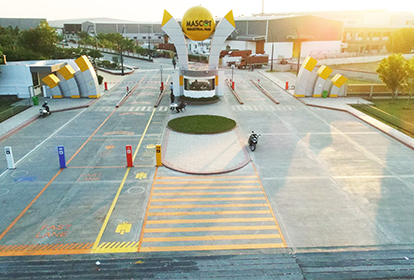With more people flocking to cities, the energy requirements of cities due to structures will skyrocket in the future. Buildings play an essential role in making human settlements productive, efficient, liveable, and sustainable. No city can be smart and sustainable unless it has a constructed environment that is carbon neutral, energy efficient, and resource-efficient.
Thus, building as a sector would necessitate thorough scrutiny and monitoring in order to impact the broader economy in terms of energy use and to make cities resource efficient and sustainable.
Consultants for VMS proceed with an integrated approach to building design to focus mostly around: rationalizing site planning; optimizing building shape and size; and evolving sustainable constructed form.
- optimizing the surface-to-volume ratio
- encouraging construction efficiency;
- creating an energy-efficient building envelope;
- reducing the ratio of the building’s length and depth;
- adopting solar passive approaches; making buildings structurally light and cost-effective;
- controlling lighting, heating, and ventilation; utilizing solar energy; and optimizing landscaping, among other things.

Suggested Principles for Site Planning;
Considering the major implications of site planning in the context of making architectural projects sustainable, cost-effective, rational, supportive, and adding value to the existing quality of environment, ecology, and local bio-diversity, broad principles governing the site planning process must be defined and detailed to serve as a guide to all architects while planning the sites of their projects. These principles should be centred on;
Respecting the site and all physical aspects on the site-
- Planning with nature, utilizing natural components such as sun, space, and greenery-
- Adopting a strategy of safeguarding, maintaining, enhancing, and promoting
- Reduce the number of proposed buildings’ fingerprints.
- Keeping the most open area possible
- Identifying the complete flora and fauna-
Making suitable provisions for rainwater collection –
- Choosing brownfield development by utilizing the following areas:
- Providing proper width setbacks:
- Reducing harm to the site:
- Restoring the abandoned area:
- Site planning for steep and sloping sites, as well as sites in hilly areas/contoured sites:
- Minimizing changes/tempering with the site’s existing physiography
- Preserving and protecting all existing natural areas and components of natural/scenic beauty, as well as safeguarding any good vistas of built/manmade/natural heritage.
Why Us:
The VMS consultant has been in the industry for decades and has flawlessly designed countless intricate projects. It is one of the leading consultants in India thanks to our commitment, hard work, innovative vision, and skilled staff.
See More
VMS is a distinguished consultancy organization providing
Design, Engineering, Architecture & Project Management
Services to various industrial segments.
Our experts are highly qualified professionals from
premier institutes and successful careers in consulting,
Meet VMS Consultants Expert Engineers and Architects in India
We are based in Ahmedabad – Gujarat, and we work on projects located all over India as well as International locations.




